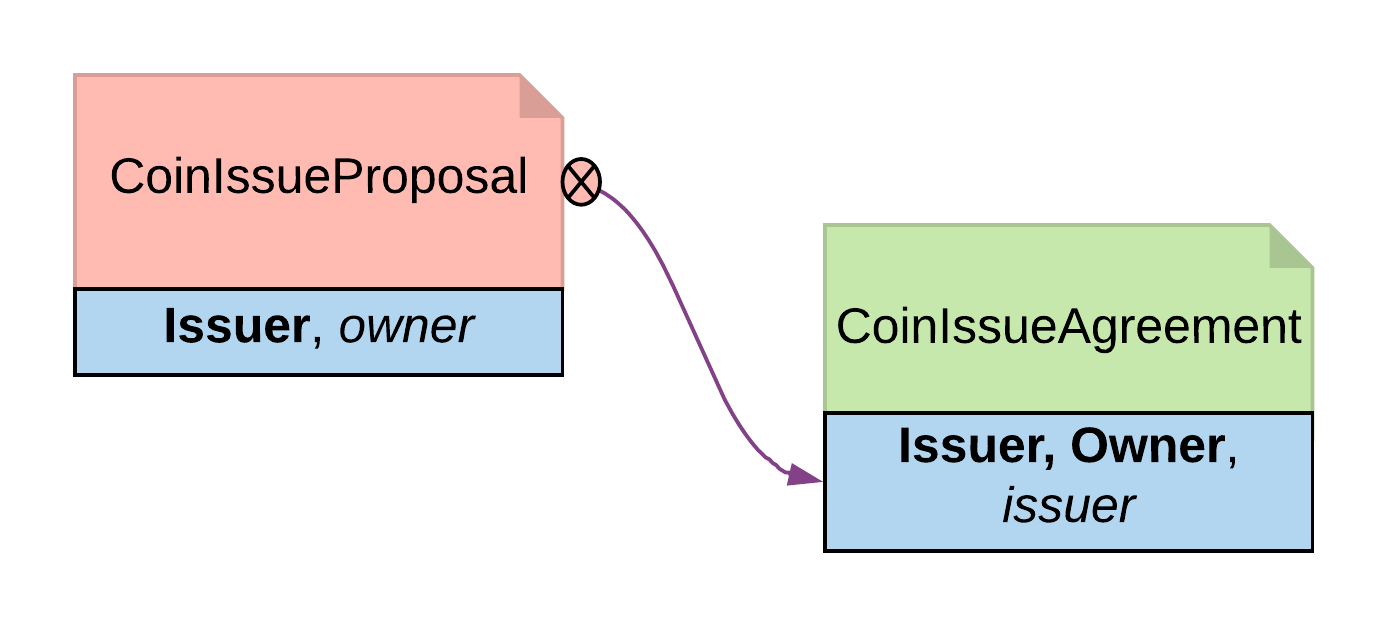The Initiate and Accept Pattern¶
The Initiate and Accept pattern demonstrates how to start a bilateral workflow. One party initiates by creating a proposal or an invite contract. This gives another party the chance to accept, reject or renegotiate.
Motivation¶
It takes two to tango, but one party has to initiate. It is no different in the business world. The contractual relationship between two businesses often starts with an invite, a business proposal, a bid offering, etc.
- Invite
- When a market operator wants to set up a market, they need to go through an onboarding process in which they invite participants to sign master service agreements and fulfill different roles in the market. Receiving participants need to evaluate the rights and responsibilities of each role and respond accordingly.
- Propose
- When issuing an asset, an issuer is making a business proposal to potential buyers. The proposal lays out what is expected from buyers, and what they can expect from the issuer. Buyers need to evaluate all aspects of the offering, e.g. price, return, and tax implications, before making a decision.
The Initiate and Accept pattern demonstrates how to write a Daml program to model the initiation of an inter-company contractual relationship. Daml modelers often have to follow this pattern to ensure that no participant is forced into an obligation.
Implementation¶
The Initiate and Accept pattern in general involves two contracts, the initiate contract and the result contract:
- Initiate Contract
The initiate contract can be created from a role contract or any other point in the workflow. In this example, the initiate contract is the proposal contract CoinIssueProposal which the issuer created from the master contract CoinMaster.
template CoinMaster with issuer: Party where signatory issuer nonconsuming choice Invite : ContractId CoinIssueProposal with owner: Party controller issuer do create CoinIssueProposal with coinAgreement = CoinIssueAgreement with issuer; owner
The CoinIssueProposal contract has Issuer as the signatory and Owner as the controller to the Accept choice. In its complete form, the CoinIssueProposal contract should define all choices available to the owner, i.e. Accept, Reject or Counter (re-negotiate terms).
template CoinIssueProposal with coinAgreement: CoinIssueAgreement where signatory coinAgreement.issuer observer coinAgreement.owner choice AcceptCoinProposal : ContractId CoinIssueAgreement controller coinAgreement.owner do create coinAgreement
- Result Contract
Once the owner exercises the AcceptCoinProposal choice on the initiate contract to express their consent, it returns a result contract representing the agreement between the two parties. In this example, the result contract is of type CoinIssueAgreement. Note, it has both issuer and owner as the signatories, implying they both need to consent to the creation of this contract. Both parties could be controller(s) on the result contract, depending on the business case.
template CoinIssueAgreement with issuer: Party owner: Party where signatory issuer, owner nonconsuming choice Issue : ContractId Coin with amount: Decimal controller issuer do create Coin with issuer; owner; amount; delegates = []

Initiate and Accept pattern diagram¶
Trade-offs¶
Initiate and Accept can be quite verbose if signatures from more than two parties are required to progress the workflow.

